Summers are usually the time we bring out our suitcases and take off on our annual holidays. But far from planning vacations this summer, we were all grappling with crisis.
So lets see if we can make up to some extent – and take off on a unique tour of India. All you need – is to take a peek into your wallet and pull out a bunch of currency notes.
If you take a careful look you will notice that our currency notes display and celebrate our wonderful heritage. Let me begin this series with a visit to one of my favourite monuments in India.
So pull out a new 100 rupee note and let’s set out!

Rani ki vav
The monument you see on the the new 100 rupee note is the Rani ki vav – a step well in Gujarat.
Most often, historical monuments tell us the stories of Men, Power and War. The Rani ki vav offers a refreshing alternative to this paradigm for it tells tales of Women, Water and Life. And that is what I like most about it.
It is not a tomb to a dead man or woman. Not a sprawling palace or fort for a mighty king. Not a spectacular temple built for the divine. But it is a simple and humble well – a valuable source of the elixir of life – built for ordinary women.
Step wells (known as vavs) are a familiar feature in the landscape of Gujarat. They differ from ordinary wells as they have steps leading down from the ground to the water-level. Further, water is not drawn through a rope but by descending the steps. Many of these wells are multi-storied structures with ornate sculpture work. But mostly, unlike ordinary wells, they are a world unto themselves and a revelation for a visitor.
Water and Women
Water, being a basic need, has often been venerated for its life-giving properties across cultures. The act of providing water is hence associated with earning merit. More so, in a land with scanty rainfall and an arid landscape, building a well was seen as an act deserving great merit. Water also has a close association with Fertility as it is responsible for the growth of crops and cattle.
Women have a deep association with Water for somehow, the duty of collecting water has over the centuries been relegated to them. Even today, women and girls often spend hours each day, walking to and collecting water.
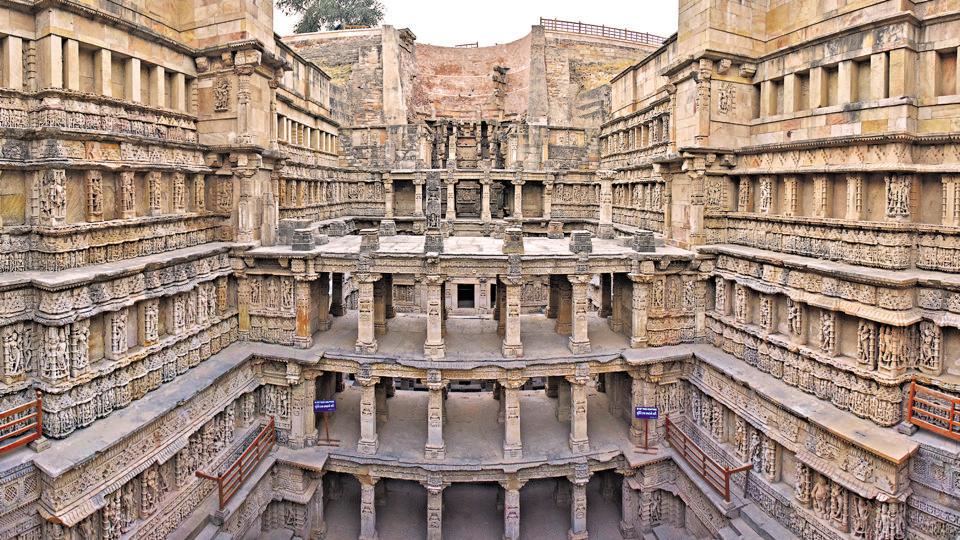
The world of women converged with water here at the stepwell.
It was a space that women could visit freely, not just to collect water but also for socialising and recreation. Below the surface and away from the male gaze, women could gather and be themselves. Friends could meet and chat. Girls could sing and dance. Secluded and safe in a space without inhibitions.
“Stepwells are a window into the lives of ordinary women of medieval times.
Shilpa Chedda,
Visiting Professor at the Mumbai University
It comes as no surprise therefore that more than 25% of the makers of the vavs of Gujarat were women. From queens to wives of rich merchants, courtesans to servant girls – women had a large role to play in the commissioning and construction of stepwells in Gujarat.
Exploring the Queen’s Stepwell
The Rani ni vav or the Queen’s Well is situated in Patan and has been granted the status of a UNESCO World Heritage site for its sheer beauty and grandeur.
It is said to have been built by Queen Udaimati, wife of Raja Bhima Dev in the 11th century A.D and is undoubtedly one of the most ornately decorated stepwells in the world.
Profusely carved and sculpted, images of 200 Apsaras or celestial nymphs abound on its walls.
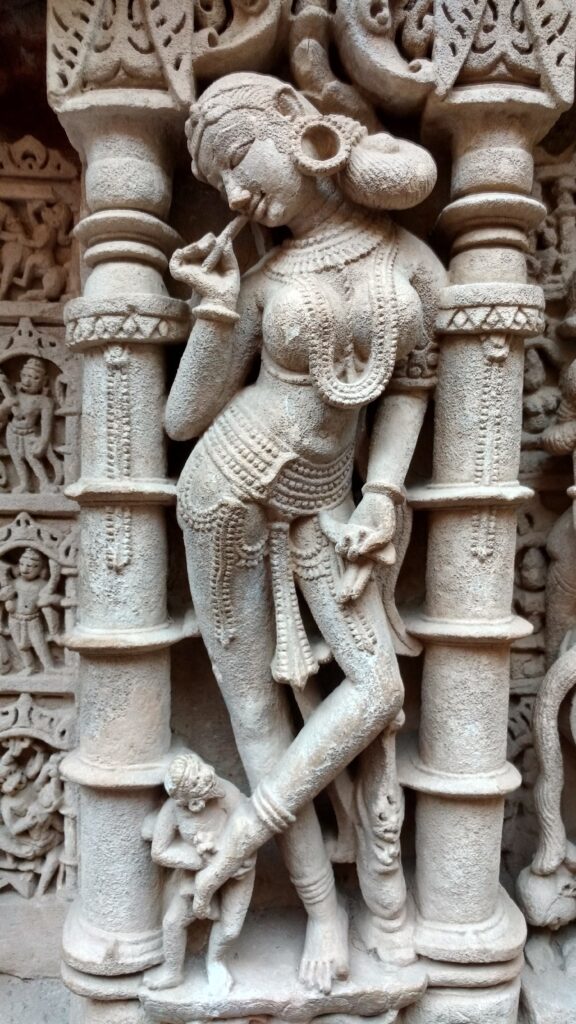
Sura Sundaris and Apsaras adorn the walls
As one descends its steps, one can see Anjana adorning her eyes with kohl and Nupura, slipping on an anklet. The Darpana-Sundari admires her reflection in the mirror as the Karna-Sundari puts on her earrings. The Kapura-sundari dries her long-flowing hair even as the Aalas-Kanya lazily stretches her curvaceous body. Each of these sculptures has been carved to perfection, revealing a high level of aesthetic and artistic skill of the craftsman.
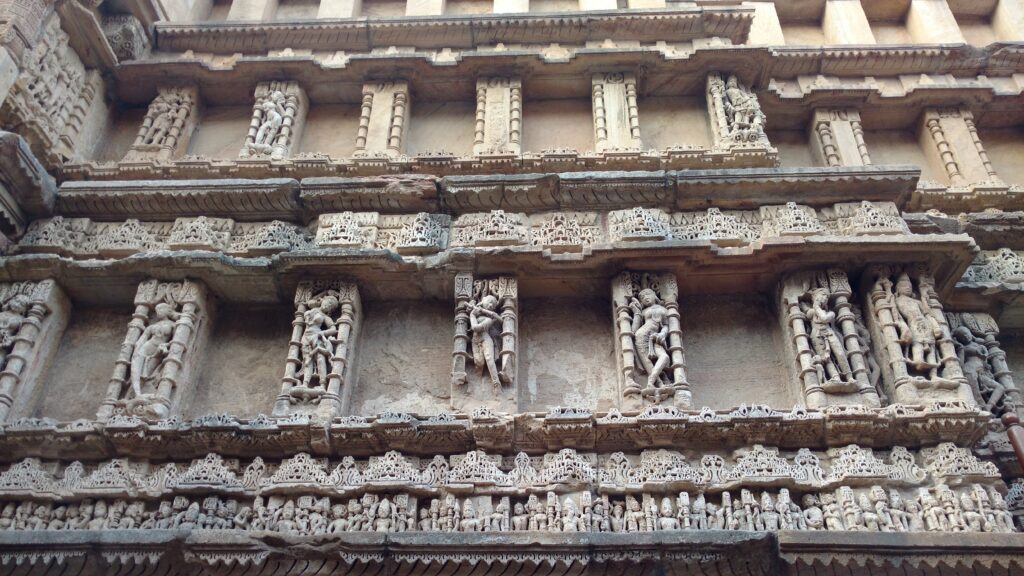
Images of kirtimukhas are found on the steps to ward off the evil eye along with the kshetrapala or the guardian deity who protects the well. Latikas (creepers) add a decorative element while the geometric shapes of the patola give it a distinctly local feel. Shaded pavilions under pillars that offered a place to rest away from the scorching rays of the sun.

Gods and goddesses, demi gods and deities, water nymphs and celestial musicians – they all make a striking appearance as one descends the steps. In the centre, Vishnu reclines in his Shesha-naag position after having sustained and provided for the world.
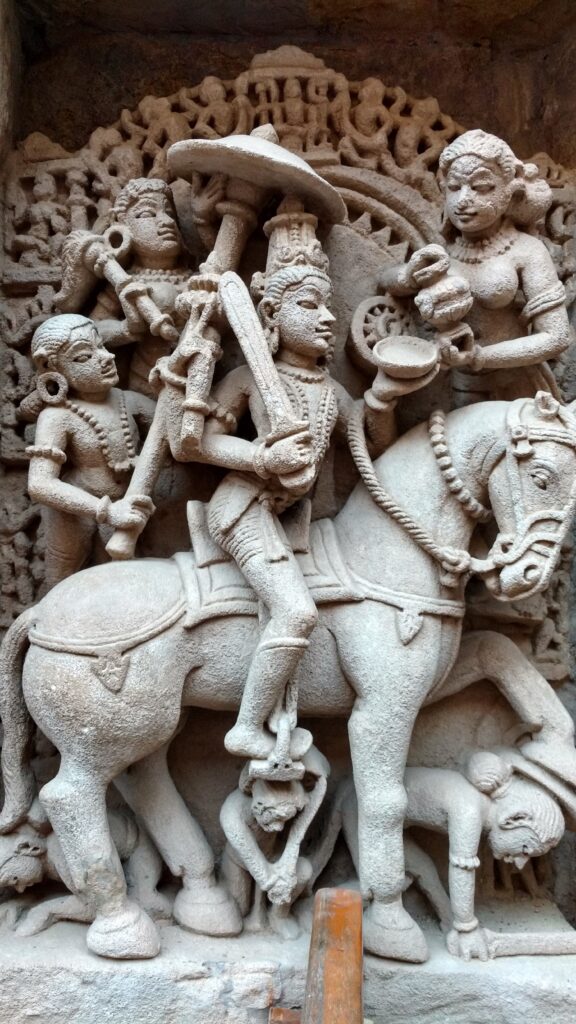
While there are many step wells in Gujarat, the Rani ni Vav is noteworthy for its brilliant sculpture-work and beauty and deserves to be included in any travel itinerary to the state.
The only travel tip I will give you is to avoid wearing yellow when you visit Rani ki vav. The colour seems to be a magnet for local insects.
PRO-TRAVEL TIP
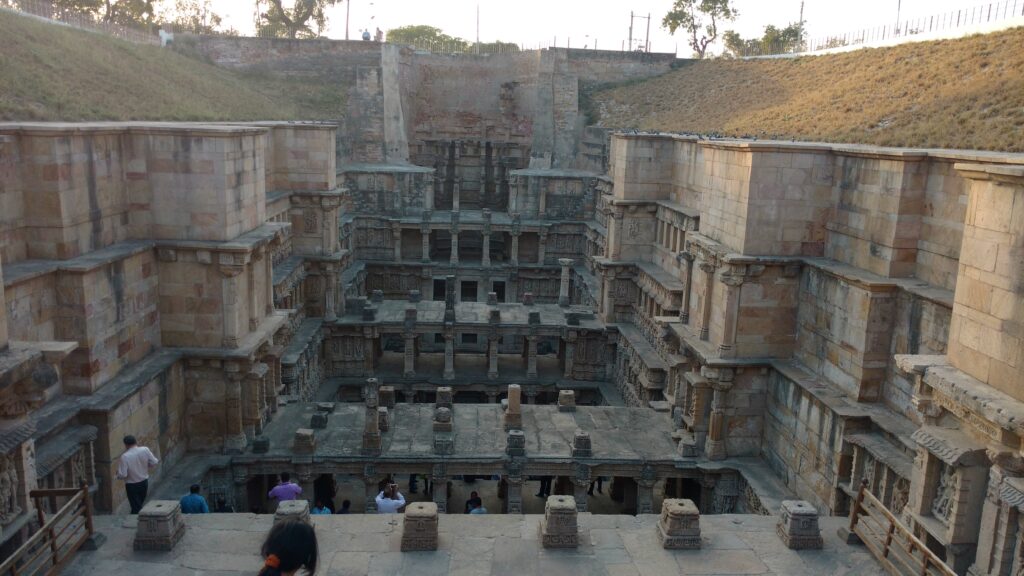
When you see the Vav from the side, you cannot tell that it is a well at all 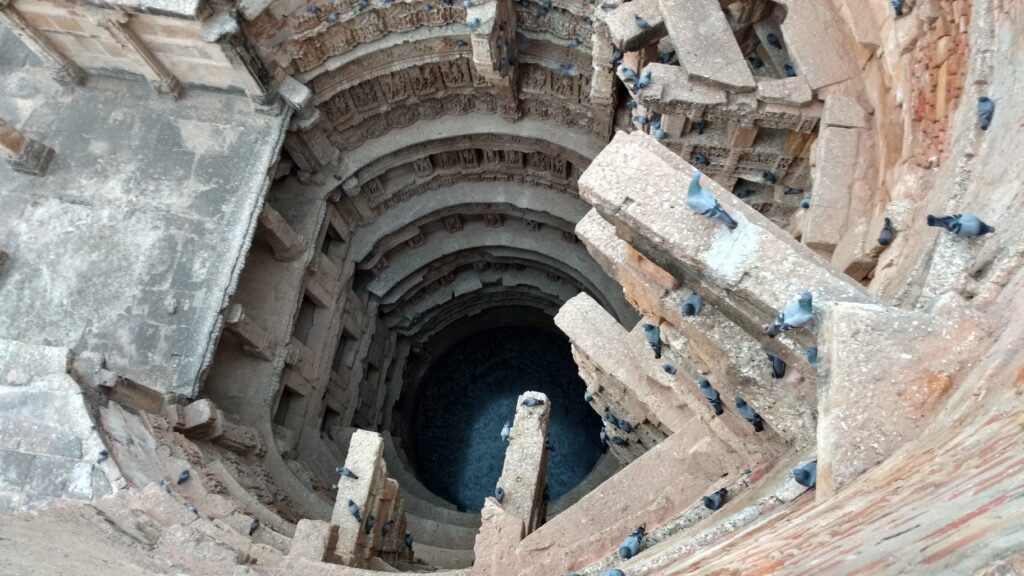
It is only from the top of the centre that you can see the water at the very bottom
Adalaj in Ahmedabad
A visitor to Gujarat may perhaps go to see the Adalaj-ni-vav on the outskirts of Ahmedabad, which sees a large footfall every year. Another smaller yet beautifully carved well nearby is the Dada Hari-ni-vav inside the city of Ahmedabad. The temple tank of Modhera Sun Temple, though not strictly a step well as it is visible from the surface, offers a spectacular visual in the detailed geometric pattern of its steps.
Patan and Rani ki vav are no doubt not as accessible as the others. But I would nevertheless recommend them highly. Make the effort…it is sure to take your breath away!
SIGN UP TO THE SITE FOR A MONTHLY DOSE OF POSTS LIKE THESE
